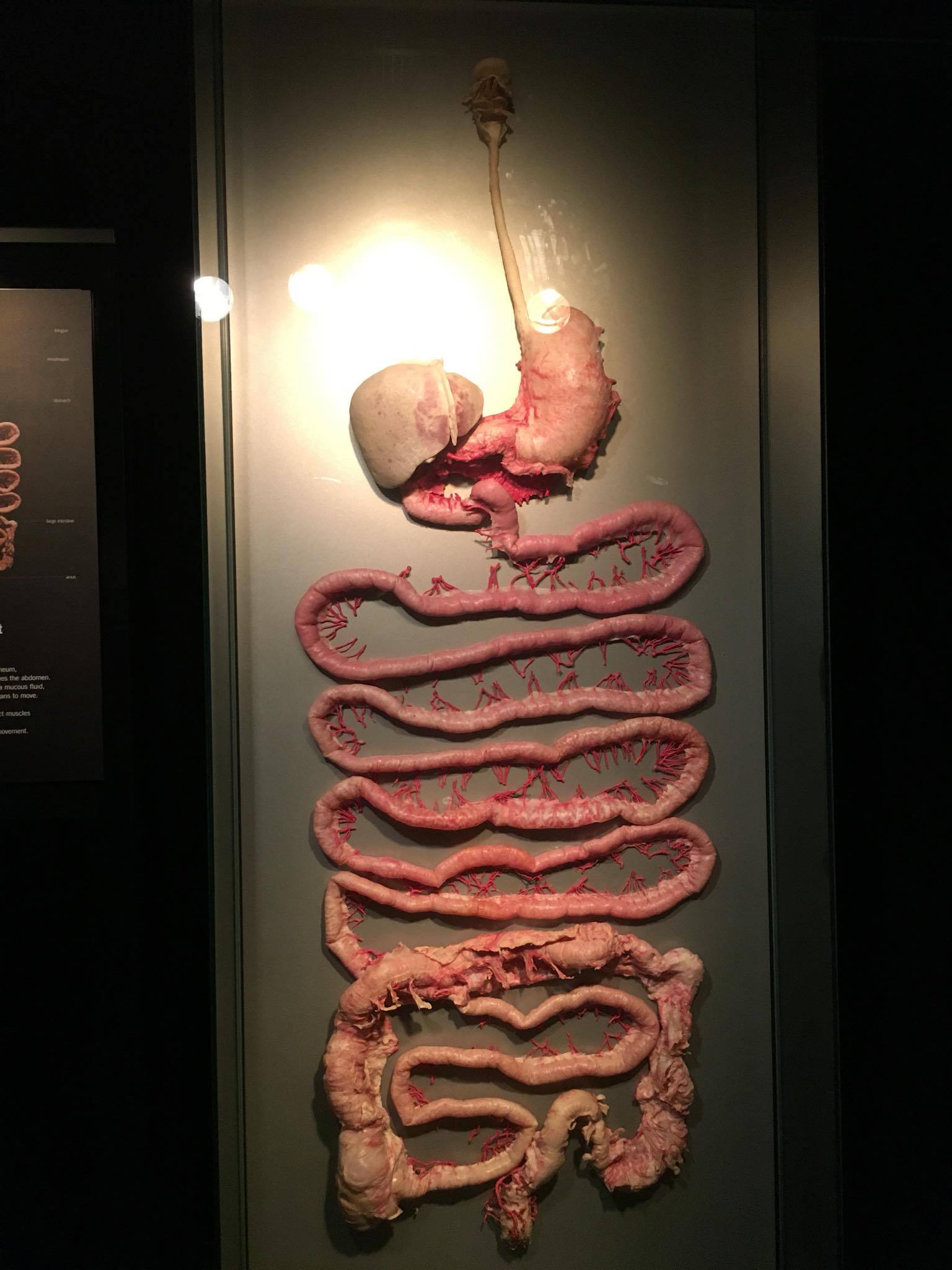
Last weekend I visited the Body Worlds Exhibition in Times Square New York. While I was fascinated with the physical anatomical features on display there (as well as impressed with the means by which real human flesh, muscles and bone were preserved for the show), I was also intrigued by the written portion on the descriptive plaques there.
The underlying theme of the exhibition seemed to be about how to keep one’s physical body healthy, as demanded by their skeletal muscles, inner organs, and skin. It turns out the answer is quite simple and is the same across the board for whole body health and longevity: diet and exercise. A whole-food plant-based diet supports the body with nutrients for proper function and development of lean-body tissue. There was even a feature photography series on display documenting the groceries consumed by families from different countries around the world. America and Mexico seemed to be one of the unhealthiest and most expensive in grocery selections, with loads of junk foods as part of their weekly consumption: soda, chips, pizza, frozen meat. The feature family in Australia had the largest meat-based groceries, while the Japanese focused on seafood and exotic foods that seemed to break their grocery bank. Meanwhile, Canada was an outstanding example of healthy eating, focusing on vegetables, fruit and water as the staples of their weekly diet.
The importance of exercise was mentioned almost in every room and piece on display. Weight-bearing exercise supports healthy bone development and maintenance, and keeps the skeleton from becoming weak as we age. It is the number one prevention method of osteoporosis, and it keeps our skin from forming wrinkles (I was interested to learn that the mechanism of wrinkles is due to our skeletal body decreasing in size and weight, so the stretched skin begins to bunch up and rest on the shrinking bones). It also supports our muscular system and keeps blood circulating in the vascular system, delivering oxygen and nutrients to all our organs and cells for proper function.
When our arteries become clogged due to improper diet (deposits of LDL and cholesterol) and lack of exercise, our health deteriorates. The heart needs to pump harder against the back-pressure within the vascular system (since blood pressure rises in the narrower openings of the canals), and grows in size as a result (since it is made of muscle tissue). The bigger heart presses on its own ventricles, making them smaller and less efficient. This can lead to infarcts (heart attacks) and eventual necrosis (death) of tissues and loss of function.
One of the most memorable displays was the lung of a smoker. Compared to a healthy lung that is white-pink, with some black spots from environmental pollution and toxins, that of a smoker is completely black due to the direct inhalation and deposits of tar. Eventually, a smoker can develop emphysema (non-functional gaps in lungs, making it hard to breathe enough air for proper oxygenation) and even lung cancer (uncontrolled growth of cells). That display should be enough to scare most people away from the toxic habit (I hope).
Overall, the exhibit is well-made and well-thought out, with interesting spotlights of the human body and organ systems. It is not only for the medical-literal public, but also for the laypeople who can easily educate themselves by reading the descriptions on plaques and walls, or just enjoy the impressive visuals. It is also kid-friendly, and kids seemed to not be bothered by the fact that they are looking at real human insides, or maybe they didn’t realize that part and were just fascinated to learn about our inner workings. I was pleasantly surprised at the focus on diet and exercise as the key to longevity and vitality, and recommend anyone go to the Body Worlds and get motivated to be healthy


